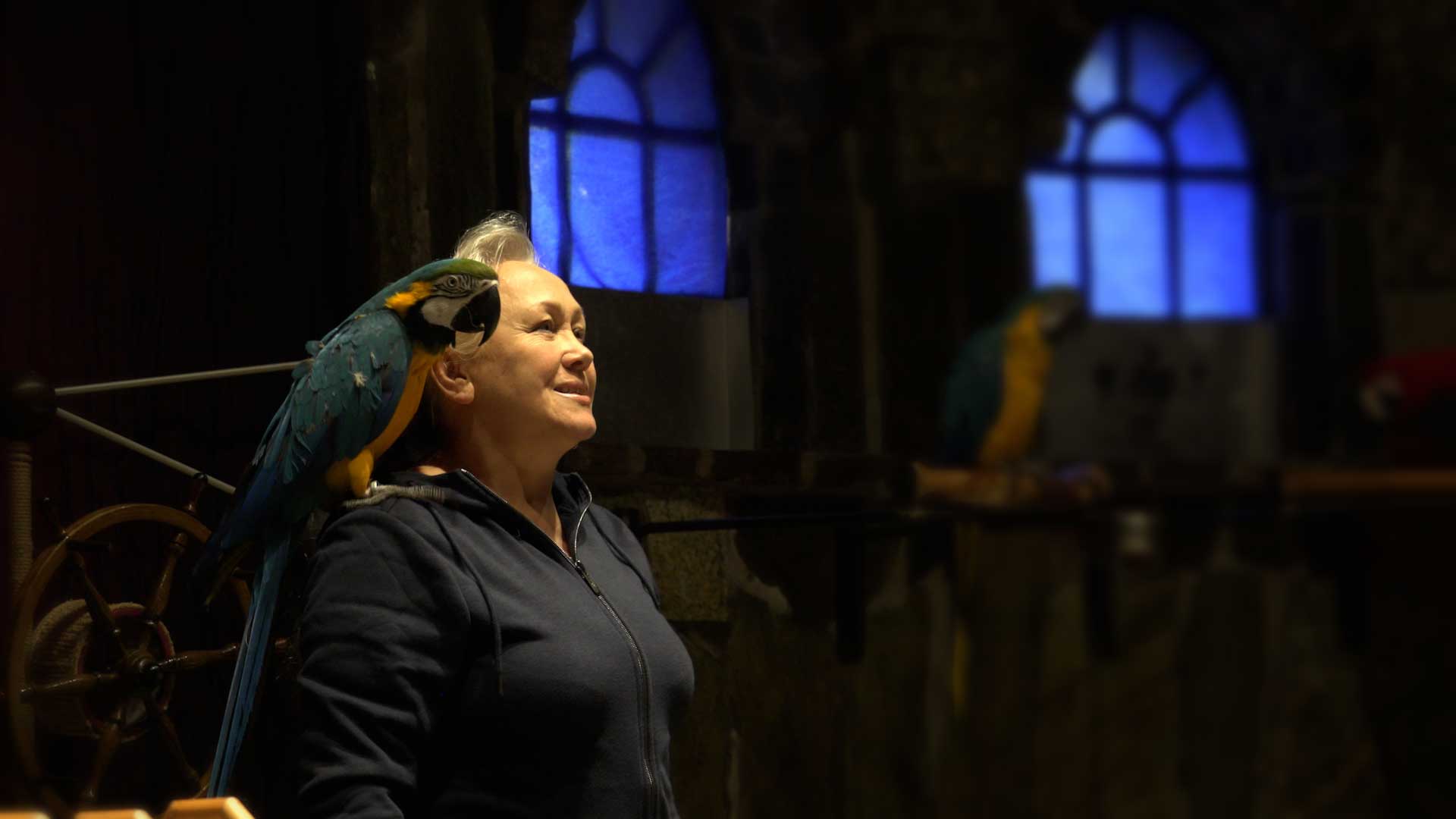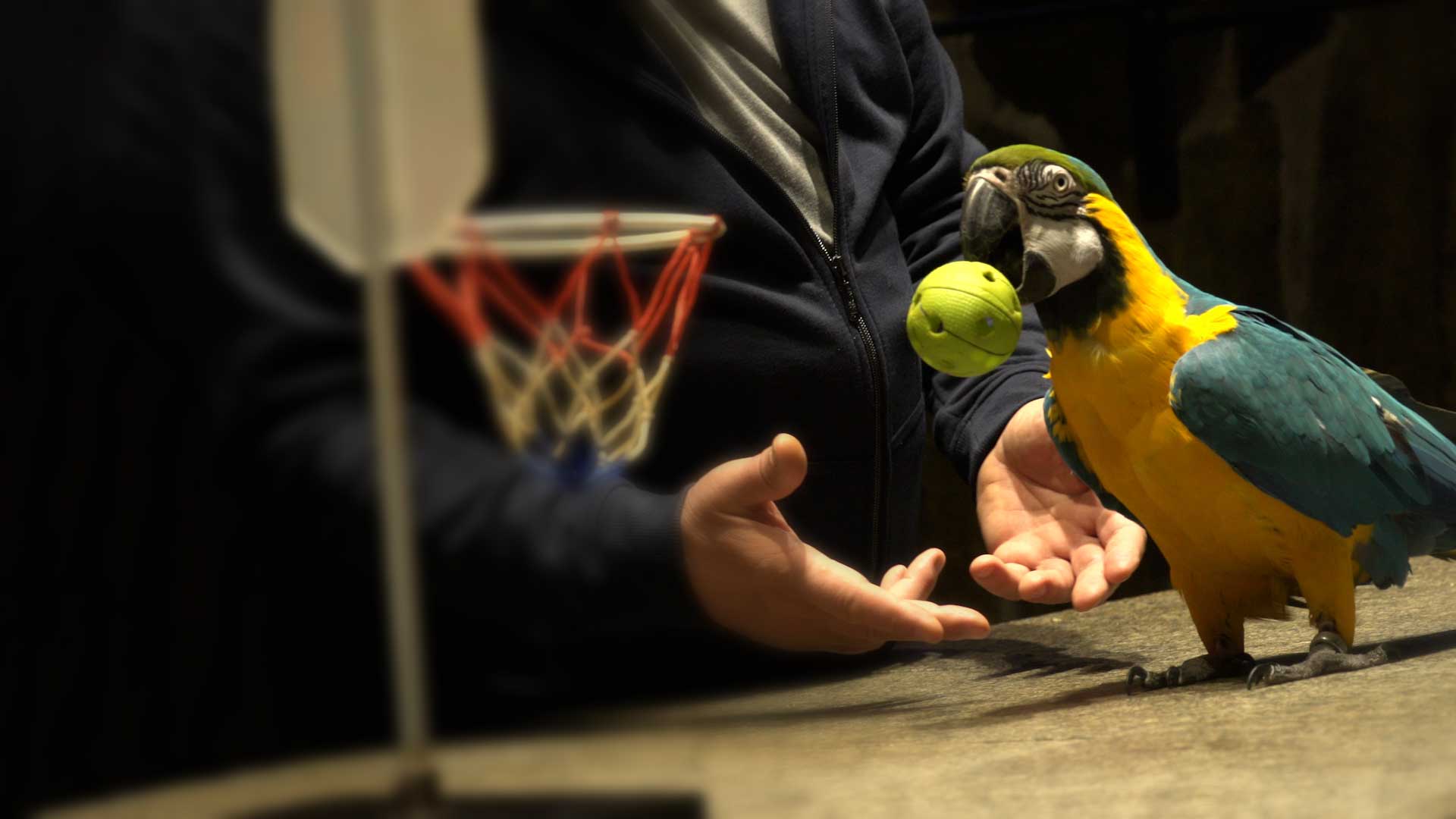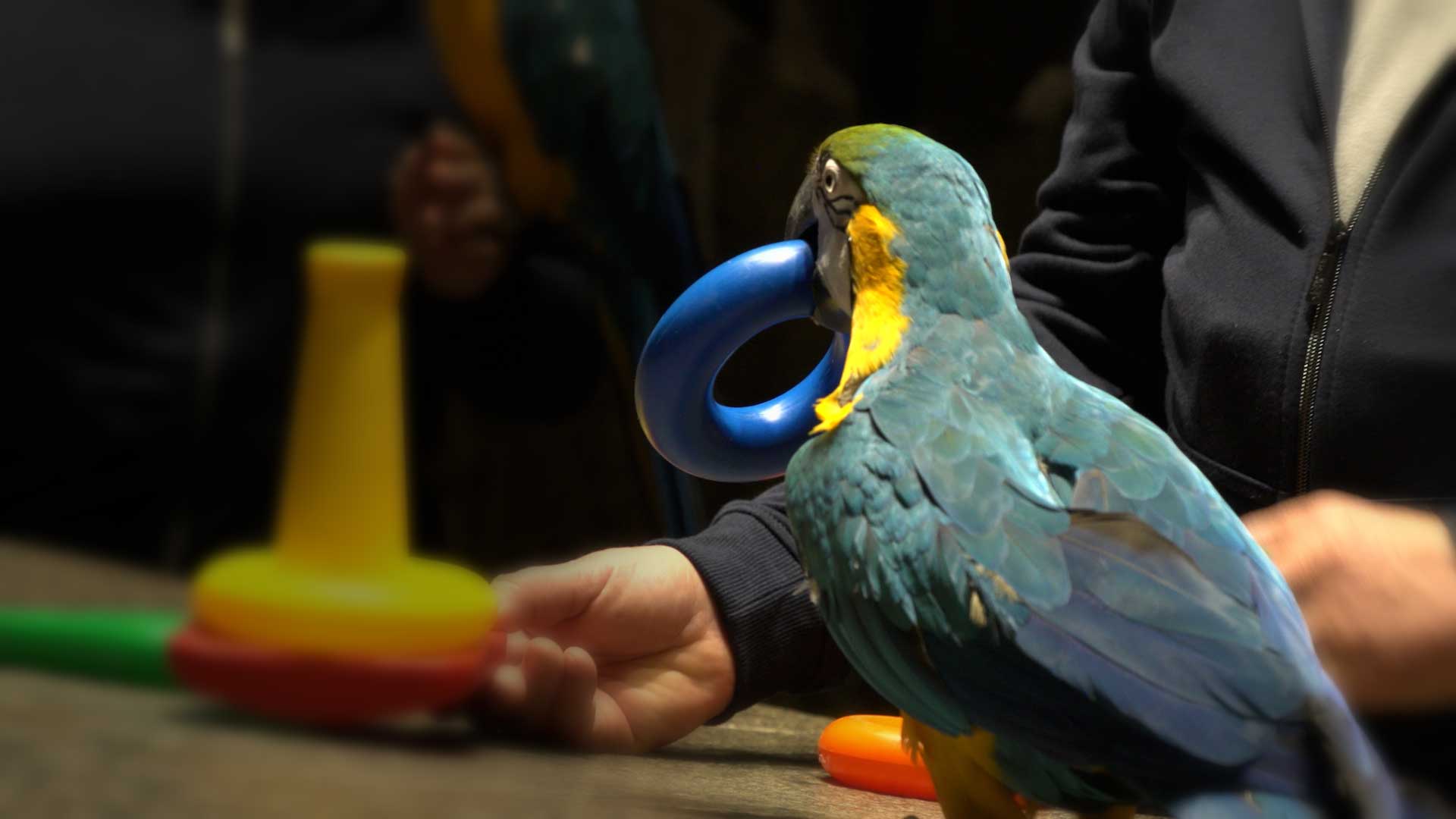
Parrot school
The parrot school is not open every day; the opening hours also change.
In the performance you will experience and see what small and large parrots have learned with great patience from their teachers and mostly over a long period of time in their parrot school. We are not talking about dressage, but about learning tricks, which is also great fun for the parrots.
Love Birds (Agapornids)
First, a group of very docile lovebirds show their learned tasks.
The word agapornids comes from the Greek language and means: love birds. In German they are also referred to as "inseparable", in English "Love Birds".
Their name says that they must be kept in pairs at least at all times, and they stay together as a monogamous couple for life, preferably in a large flock of lovebirds.
Keeping them with other parrots in an aviary is not a good idea as they are very aggressive towards other parrots and birds, even to much larger ones, and will bite vigorously.
Parrot school
The parrot school is not open every day; the opening hours also change.
In the performance you will experience and see what small and large parrots have learned with great patience from their teachers and mostly over a long period of time in their parrot school. We are not talking about dressage, but about learning tricks, which is also great fun for the parrots.
Love Birds (Agapornids)
First, a group of very docile lovebirds show their learned tasks.
The word agapornids comes from the Greek language and means: love birds. In German they are also referred to as "inseparable", in English "Love Birds".
Their name says that they must be kept in pairs at least at all times, and they stay together as a monogamous couple for life, preferably in a large flock of lovebirds.
Keeping them with other parrots in an aviary is not a good idea as they are very aggressive towards other parrots and birds, even to much larger ones, and will bite vigorously.


Macaws from South America
As you can see in the many different aviaries at the Vogelburg, there are a lot of different species of macaw parrots. Even small species. The most well-known are the Blue and Yellow Macaws, the Green-winged Macaws, the Scarlet Macaws, the Military Macaws and a large number of hybrids from different species with very colorful plumage. These brightly colored feathers were used as jewelry by many indigenous peoples in South America.
Here at the Vogelburg there are a large number of Blue and Yellow Macaws to see. They are friendly and lively parrots and are relatively easy to breed if a few important rules are followed by macaw keepers. They are curious and also intelligent. On average they live to be 50 years old. But the other macaws mentioned can also be observed in the aviaries of the Vogelburg.
Macaws particularly like to eat nuts and sunflower seeds, also as a reward after performing their tricks.
Macaws from South America
As you can see in the many different aviaries at the Vogelburg, there are a lot of different species of macaw parrots. Even small species. The most well-known are the Blue and Yellow Macaws, the Green-winged Macaws, the Scarlet Macaws, the Military Macaws and a large number of hybrids from different species with very colorful plumage. These brightly colored feathers were used as jewelry by many indigenous peoples in South America.
Here at the Vogelburg there are a large number of Blue and Yellow Macaws to see. They are friendly and lively parrots and are relatively easy to breed if a few important rules are followed by macaw keepers. They are curious and also intelligent. On average they live to be 50 years old. But the other macaws mentioned can also be observed in the aviaries of the Vogelburg.
Macaws particularly like to eat nuts and sunflower seeds, also as a reward after performing their tricks.


Blue and Yellow and Green-winged Macaws
Here at the parrot school, the Blue and Yellow and Green-winged Macaws are showing what they learned at their parrot school. It is a skill that requires a great learning ability from these parrots and an extremely good relationship between the trainer and the parrot. The basis for this is always the boundless trust of the parrot in its trainer.
This procedure is called: positive reinforcement: Whenever the bird has behaved correctly, the trainer should praise it very explicitly.
Once there has been a serious, disruptive incident in this relationship, the parrot will never forget it and will always remain very cautious and reserved, never becoming a bird capable of performing learned tricks. Watch how these parrots recognize and associate shapes and colors, how they successfully manipulate technical devices and devices and pass simple numerical tests.
Blue and Yellow and Green-winged Macaws
Here at the parrot school, the Blue and Yellow and Green-winged Macaws are showing what they learned at their parrot school. It is a skill that requires a great learning ability from these parrots and an extremely good relationship between the trainer and the parrot. The basis for this is always the boundless trust of the parrot in its trainer.
This procedure is called: positive reinforcement: Whenever the bird has behaved correctly, the trainer should praise it very explicitly.
Once there has been a serious, disruptive incident in this relationship, the parrot will never forget it and will always remain very cautious and reserved, never becoming a bird capable of performing learned tricks. Watch how these parrots recognize and associate shapes and colors, how they successfully manipulate technical devices and devices and pass simple numerical tests.


